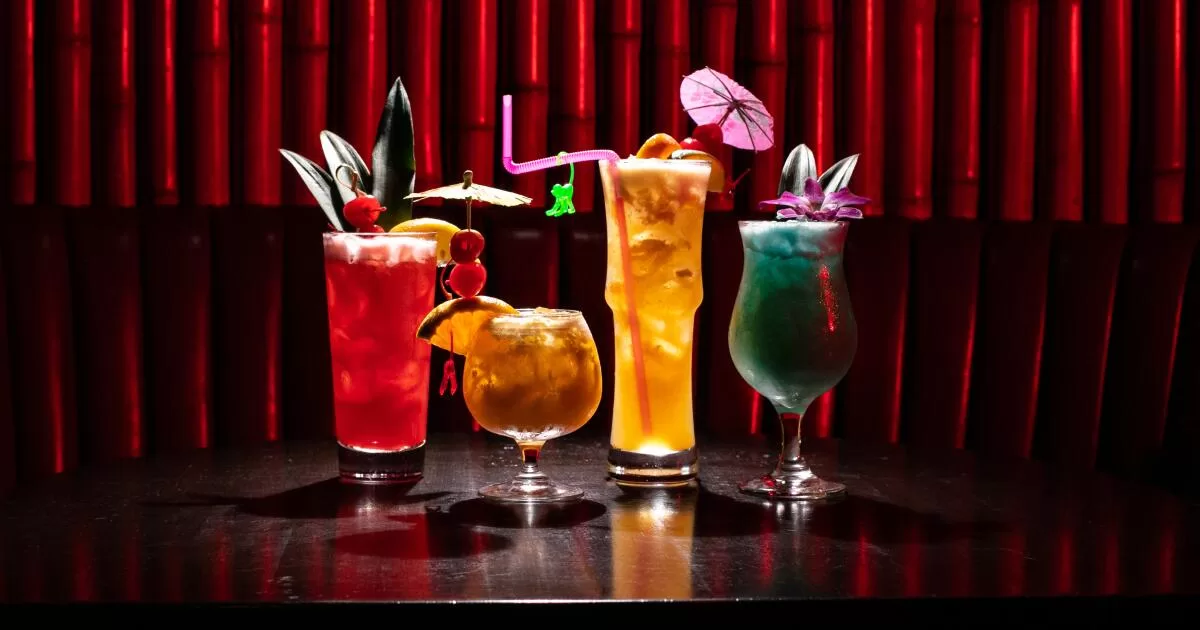Maybe it’s our nostalgia for midcentury Americana, or simply a desire to retreat to a world where we can sip umbrella-adorned cocktails without a care in sight. The latter explains why Don the Beachcomber, offering a cheerful distraction during the Great Depression, was so popular in its heyday. The tropical-themed cafe laid the foundation for modern-day tiki bars like Belles Beach House in Venice. “Tiki culture was brought to Southern California as a way to create an escape for people,” said Belles general manager Chris Newcomer. “You walk into a room and have a drink that makes you feel like you’re somewhere else.”
With the recent tiki resurgence comes increased scrutiny of its not-so-sunny aspects, mainly the fact that the original establishments didn’t always approach certain cultures with sensitivity. Often, they created an escapist fantasy that appropriated Hawaiian or Polynesian iconography and aesthetics while sidestepping the uncomfortable realities of colonialism.
A product of its era, tiki bars offered a manufactured culture — one that borrowed from diverse regions and communities. “The Caribbean islands are represented in the spirits served in tiki cocktails, the food is Chinese-based and the decor is Polynesian-inspired,” said Kevin Murphy, co-owner of Tonga Hut, L.A.’s oldest surviving tiki bar. “To midcentury Americans, all of these locations were exotic, far-off lands that most had just a fleeting awareness of, a dream that most locals could never visit.”
But as the tiki bar found its footing in California, it acquired an eclectic flavor all its own — a cultural mashup that reflected the region’s diversity, creativity and ingenuity. “The tiki culture that exists now was born here,” said Sunni Aceves, a manager at North Hollywood’s Tiki No. “It’s been adopted across the nation, but the West Coast will always be its home.”
During the height of tiki culture in the ’60s, commercial air travel became increasingly accessible and more Americans were able to visit the faraway places that inspired their local tiki haunts. With that came a deeper understanding of tiki’s roots. “The world is a very different place now, and most people are aware that these places are more than just an exotic-looking space, but inhabited by people like us with rich cultures and interesting histories,” said Murphy.
After a decline in the ’70s, tiki bars continued to make a comeback again and again, most recently as an extension of the craft cocktail renaissance. “Some of the most classic cocktails fall under the tiki banner, and revising them is very much in the spirit of the craft cocktail movement,” explained veteran restaurateur Jared Meisler, who recently opened Gin Rummy in Venice.
Whether you’re looking for an old-school dive with cheesy decor or a polished new venue with fresh takes on classic tropical cocktails, here are 15 of our favorite tiki bars and restaurants in Southern California for your next escape. — Tiffany Tse
